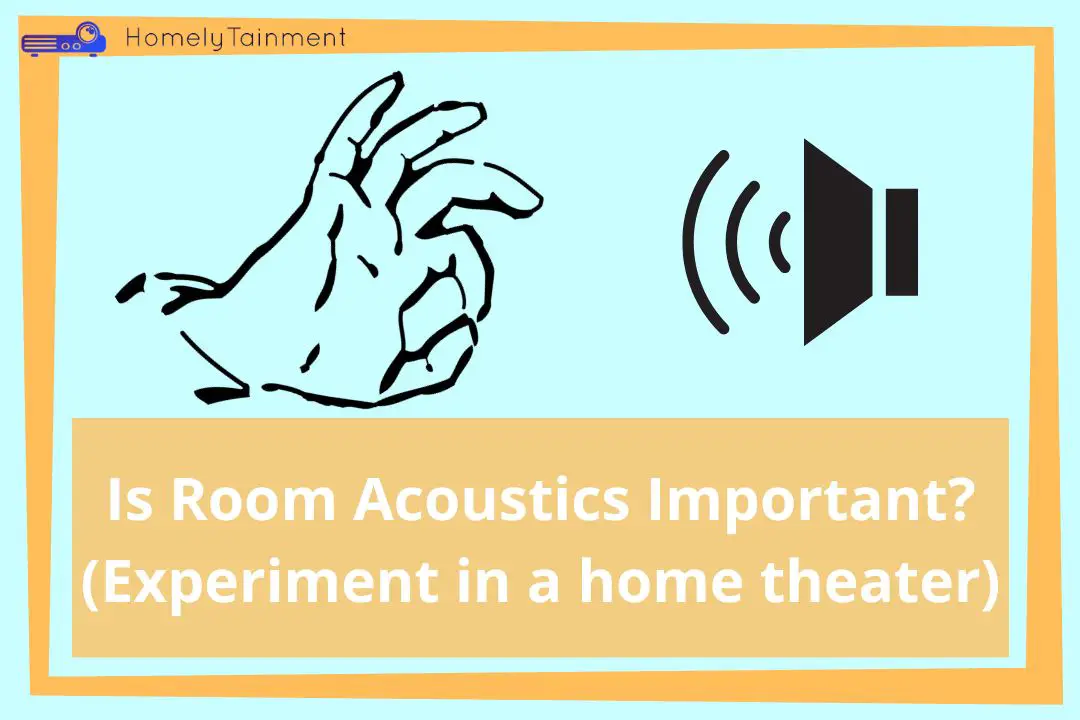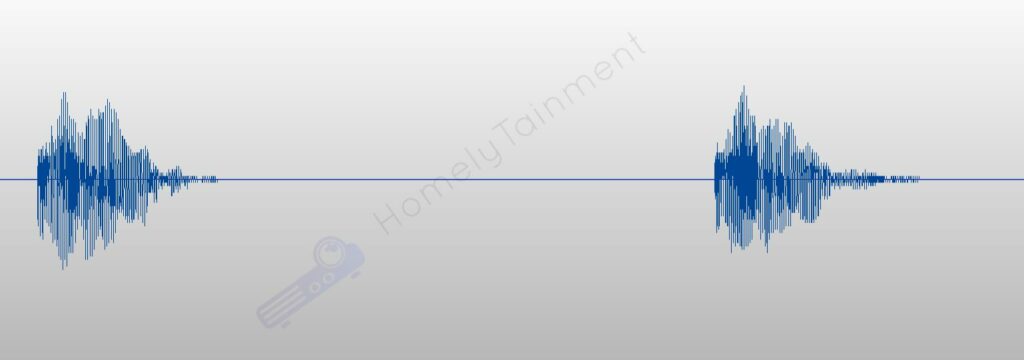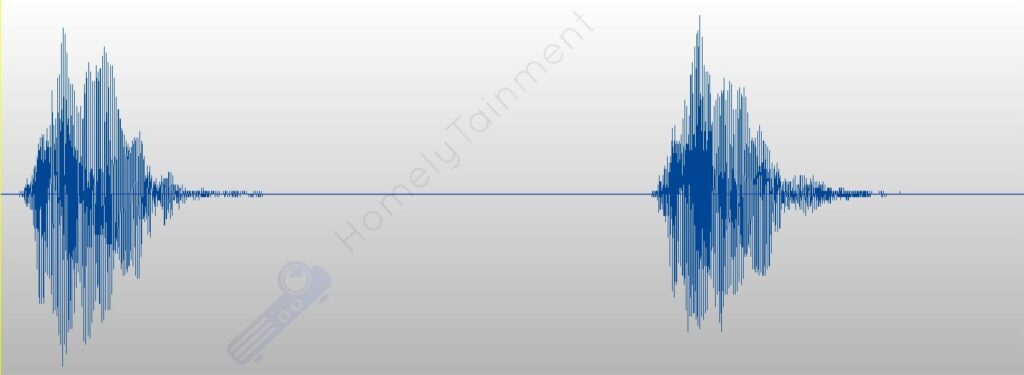
Homelytainment earn commissions (at no additional cost to you) if you purchase products from retailers after clicking on a link from our site.
The room acoustics is one of the most debated aspects of the home theater. Every expert is talking about it. But is room acoustics important?
At A Glance: The room acoustics is important because the overall audio has an echo in an acoustically untreated room, and even the sound rays that hit the audience’s ears without colliding with hard surfaces sound dull too.
The following guide is based on an experiment that has 3 results. Every result is accompanied by audio and graphs. You will know why it is important at the end of this guide.
Experiment to analyze the importance of the room acoustics
I conducted this experiment when the next client needed a home theater in one of his rooms. I told them about writing this guide and he was willing to help. I installed the sound testing mic in the middle of the room and started conducting the experiment.
Brief start: This experiment has three results (1) the sound rays that hit your ears without colliding with other things in an untreated room, (2) the overall sound rays, (3) and the sound quality of all the rays in an acoustically treated room.
Let’s deep dive and explain each one.
Audio rays first hitting point experience in an acoustically untreated room
Here I mean. The audio comes out of the speaker and hits your ears straight without colliding with any other things in the room. The things with hard surfaces like walls, floors, or ceilings.
We don’t sit close to speakers because at the home theater, we sit a little away from the screen. For a 4K screen of 100 inches, we should sit at a 6.3 ft distance. At this distance, the first rays of the audio sound as the following audio clip.
I recorded this audio by placing the audio mic at the front of the speakers at a distance of 6.3 ft. That’s why the mic couldn’t capture its pure shape. The shape of the sound is distorted due to the improper acoustic nature of the room.
Here the dog bark will sound fine. But it is not. Because it is the bark of a grown dog. There was a depth in the bark which you can feel in the third result of this experiment. But here the bark sounds so shallow and like a very young puppy is barking. But in reality, it was the sound of a grown dog.
Here is the graph of this first result. Compare this graph with others in this guide.

Let’s proceed to the most annoying part of the acoustically untreated home theater experience.
Read my this guide to know how to optimize home theater audio in 5 steps. You will learn a few more things.
All audio rays’ combined sound quality in an acoustically untreated room
The speakers don’t throw the sound rays just in one direction and straight at you. But all other rays collide with the hard surfaces of the room and continuously travel all other the room and you hear the same sound effects or dialogues several times in different time periods. This confuses your mind and ruins the home theater experience for you.
Listen to this audio of the same barking sound in the acoustically untreated room.
Here the same barking sound has echo in it. Because a chunk of its rays collides with the walls, floors, and ceilings of the room. They bounce back and collide with another wall and after several collisions, the same sound hit your ears which did at the first hitting point too.
That’s why you hear the same sound several times in an acoustically untreated room.
Here is the graph of this experiment’s results. Compare it with other graphs in this guide.

Let’s see what the same sound graph and audio sound like in the next section.
Audio quality nature in the acoustically treated room
Here I acoustically treated my client’s home theater. Here I have written the complete process of home theater acoustics treatment.
I then played the same sound in this room. My client was shocked too. Let’s play and analyze the final version of the sound. By the way, it is pure sound without the flavors of hard surfaces around the room. The form that the producers want you to feel and hear.
Here the sound is deep and not shallow like the first result of this experiment. You can feel from the bark that it is a grown dog and not a little puppy. At the first experiment result, it sounds like a little puppy.
Here is the graph of the same sound. Compare it with others.

Let’s proceed to the final verdict and close this topic for good.
Final Verdict: Is it important?

You can see from the graph above that the same speaker setup and same audio source will sound dull if the room acoustics are not right. You will question the speaker setup quality. But the reality is totally different because the acoustics of the room are not helping the speakers.
You need to feel the sound in the way that the producers want you to feel. Because after that you can feel connected to the visuals on the screen. The audio creates an audio image of the visuals on the screen. That’s why it is very important to acoustically treat your home theater.
After that, you can feel the magic of a home theater because it was invented to feel the realism of movies or TV shows. Without proper acoustics the home theater is incomplete.
Read my this guide to know how to increase home theater bass in 9 steps. You will know the importance of bass and depth in audio.
Did you get something out of this theater room acoustics guide? Hold On We Have Something Exciting To Share.
[the_ad id=”4771″]FAQs
How important is audio in a home theater?
The audio is the backbone of the home theater without the right speakers set up the theater system won’t be able to create audio imaging of the visuals on the screen in your room. In this way, the audio immersive you in the universe of movies or TV shows.
The audio creates an image of the screen visuals in the room. When you close your eyes you should be feeling that the train is moving from left to right or which character is speaking in which part of the room. This audio brings the whole action to your room.
This was my opinion. Know more about it from this PCMag article.




